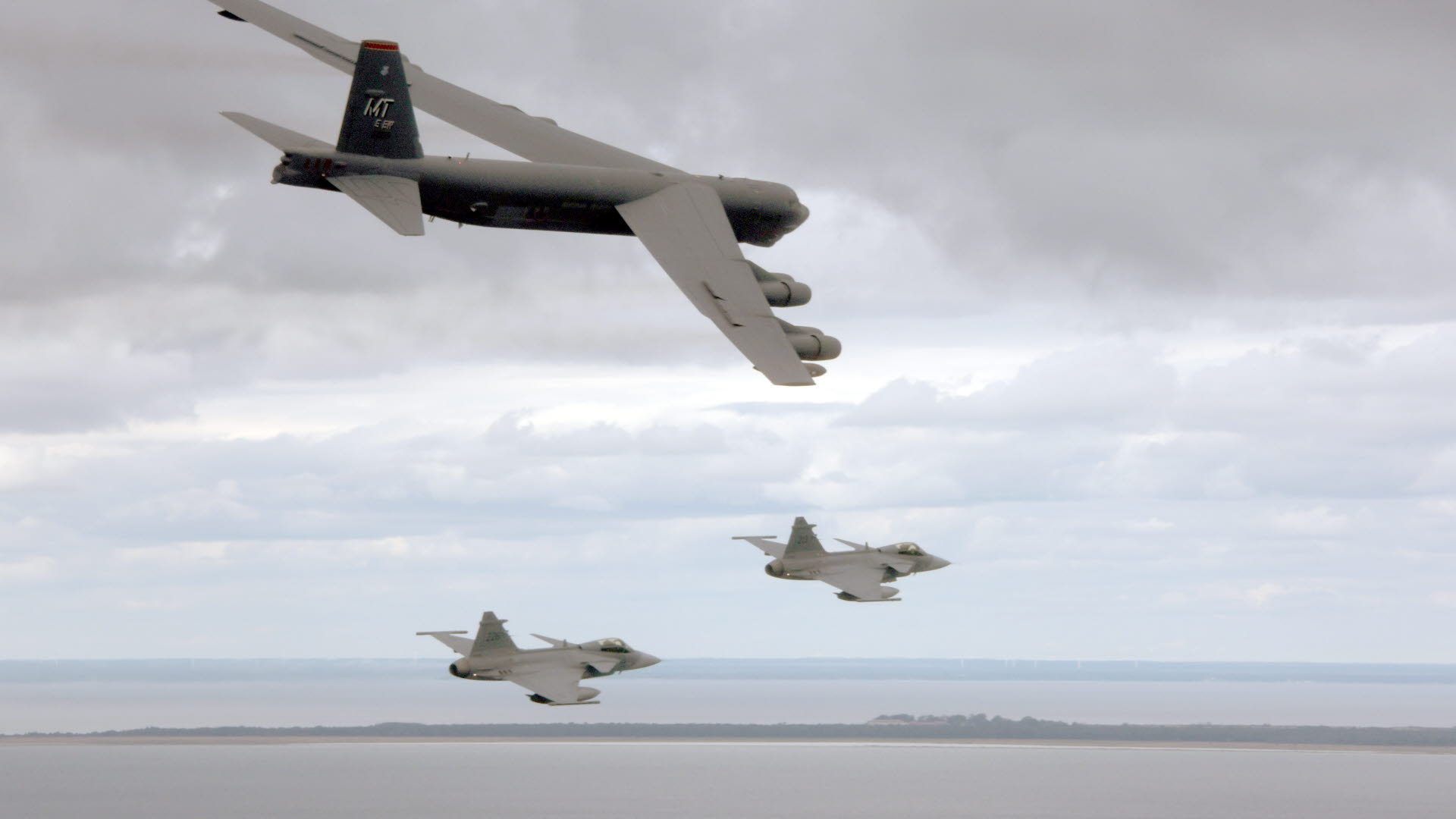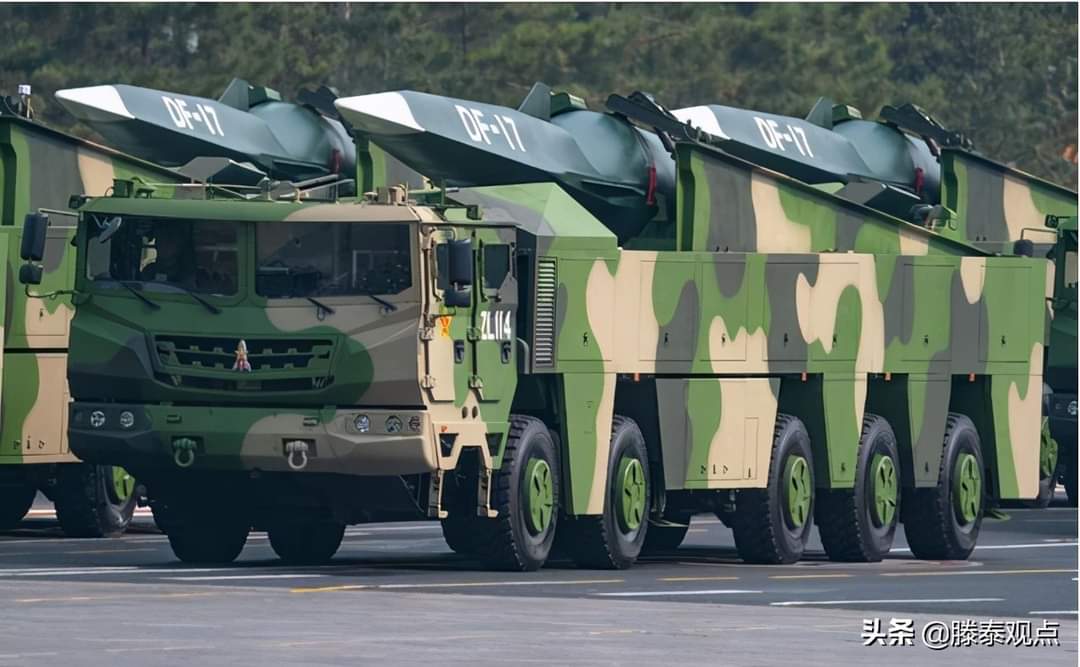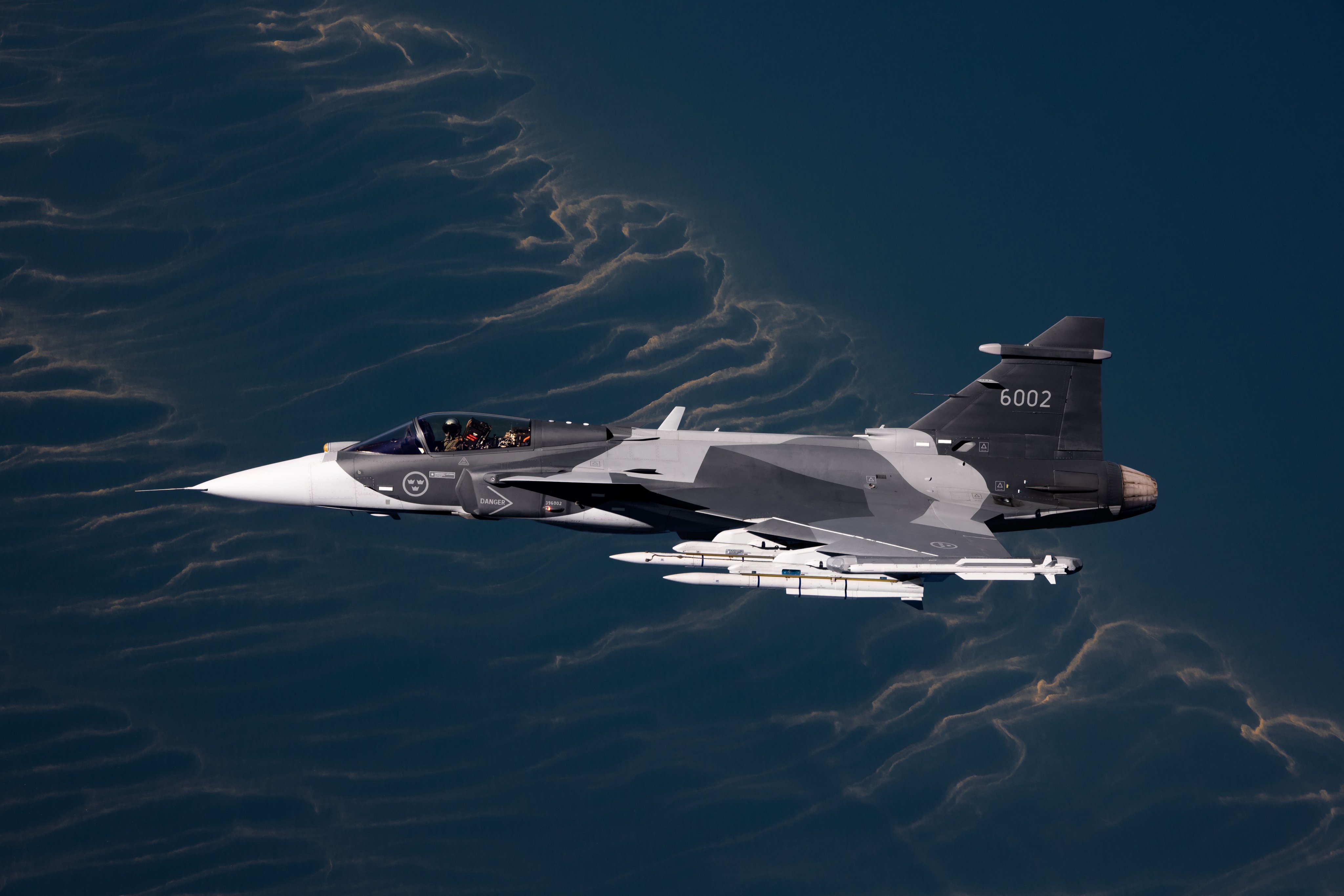The US Air Force in Europe (USAFE) intends to take a leaf out of the Swedish Air Force’s (SwAF’s) book in wartime dispersal of warplanes and is sending its personnel to Sweden, as per the latest reports.
Dramatic Video Shows US Navy’s Most Advanced Warship ‘Harassed’ By Unidentified Drone Swarms
The Commander of USAFE, General James B Hecker, told reporters on August 26 during the Uppsala Airshow that he is sending personnel to Sweden “to see how they do this so well,” while speaking about SwAF’s ability to disperse its fighter forces.
“The ability to disperse aircraft is a specialty of theirs,” Gen Hecker said of the SwAF, adding, “Sweden has got Agile Combat Employment (ACE) down better than any other air force in the world, and we are going to exploit that [knowledge for NATO]. It’s very exciting!”

According to Gen Hecker, a team from the US Air Force’s (USAF’s) Air Combat Command (ACC) should arrive in Sweden in the coming days.
Agile Combat Employment
The USAF has been focused on the Agile Combat Employment (ACE) concept in recent years to meet the increasing challenge from anti-access/area denial (A2/AD) capabilities fielded by near-peer adversaries like China and Russia.
In 2018, the then US Secretary of Defense, James Mattis, outlined a new strategic approach for the US military in response to the changing strategic environment facing the US, which demanded a shift from the counter-insurgency and overseas contingency operations to a posture more suited for a conflict with a near-peer adversary like China and Russia.
“[The Department of Defense] will prioritize ground, air, sea, and space forces that can deploy, survive, operate, maneuver, and regenerate in all domains while under attack. Transitioning from large, centralized, unhardened infrastructure to smaller, dispersed, resilient, adaptive basing that include active and passive defenses will also be prioritized,” said the 2018 US National Defense Strategy.
Over the years, China and Russia have developed long-range precision fires involving thousands of ballistic and cruise missiles, posing a massive challenge to the technological capabilities of modern-day air defense systems, making overseas US bases vulnerable to attacks from these countries.

For instance, China can strike the US military facilities in the western Pacific’s first and second island chains. Most importantly, China and Russia are the only countries at present with operational hypersonic weapons, and the US is still playing catch-up.
Meanwhile, Russia has even used its Kinzhal hypersonic missile in the ongoing Ukraine war, which even US President Joe Biden himself has admitted, is “almost impossible” to intercept.
Biden about "Kinzhal": this is an ordinary rocket, however, it cannot be stopped
A light bulb is the also a pear, but you can’t eat it!
Water is the same as gasoline, but you can’t refuel the car …
? pic.twitter.com/hOQqwNVLVL— Levi (@Levi_godman) March 22, 2022
Therefore, it is essential that in a potential future conflict with China, the US can rapidly deploy, disperse and maneuver combat capability throughout the conflict zone.
There can be no better example of this than the ongoing Russia-Ukraine war, where Ukraine’s Air Force has been able to keep the Ukrainian airspace contested, despite being outnumbered by the Russian Air Force.

Recognizing the threat from Russia’s arsenal of ballistic and cruise missiles that can strike anywhere, the Ukrainian fighter pilots adopted flexible tactics like keeping the aircraft moving from one airfield to another and flying difficult flight paths to reduce the chance of the enemy catching them on the ground.
Sweden’s Strategy Of Dispersing Its Fighters
As Gen. Hecker said, Swedish Air Force has got Agile Combat Employment (ACE) down better than any other air force in the world.
This is because of the Soviet threat during the Cold War that led Sweden to develop an air basing strategy that dispersed the fighters throughout its territory, making it difficult for the Soviet forces to destroy the entire Swedish fighter fleet on the ground in a surprise attack.
This strategy, also known as the BAS 90 program, involved several airstrips hidden in forests and reinforced highways adjacent to the main airstrips as backup runways. The Swedish fighter jets are designed to operate from such small airstrips and straight stretches of road.
So, the SwAF’s latest Gripen E fighter jet, for example, can land in 600 meters and take off in 500 meters, as per the claims of the aircraft maker, SAAB.
The landing strip only needs to be 16 meters wide. This short take-off and landing (STOL) capability enables the Gripen to fly from taxiways, small civil airfields, or highways.

The fighter was equipped with canards that create more lift at slower speeds during landing and help increase its angle of attack.
Once the fighter touches down, it has to be stopped quickly. For this, the Gripen’s predecessor SAAB 37 Viggen, had a thrust reverser that slowed down and brought the aircraft to a halt. However, SAAB decided to drop the thrust reverser system and instead used the canard and wheel brakes to stop quickly.

“We use the canard and the wing rudders to create aerodynamic downforce to make the brakes more effective,” Eddy de la Motte, head of the business unit for SAAB Gripen E/F, told FlightGlobal. “It’s like what you do on Formula 1 or NASCAR.”
Also, rather than servicing the aircraft at fixed repair depots, mobile maintenance crews, driving vans and military trucks, bring fuel, munitions, and parts to the aircraft’s position.
SAAB claims that refueling and rearming, including reloading the gun and attaching air-to-air missiles, can be completed in less than 10 minutes with only one technician and five conscript mechanics.
The entire maintenance equipment fits inside a single small shipping container, and the maintenance areas of the jet are made easily accessible with the help of push button latches that are used to open and close access panels.
Also, the service panel and refueling hatch are located in the same area to minimize the crew walking around time.
“It was a must that it was easy for a conscript with only one year of training and education,” Mikael Olsson, head of flight testing for SAAB and a former Viggen pilot, told FlightGlobal. “For example, changing an engine in the woods or on the bases, the requirements were you should do that in an hour,” he said.
The engine can be detached from the airframe by removing just a few bolts, disconnecting the fuel, hydraulic lines, and gearbox, and lowering it using hand-cranked fishing rod-like winches. This tool can also be used to load missiles onto aircraft pylons.
After the refueling and rearmament of the aircraft are completed, the ground crew disappears into forest encampments. Personnel and equipment are positioned near runways very briefly to avoid being killed or destroyed in an attack.
- Contact the author at tanmaykadam700@gmail.com
- Follow EurAsian Times on Google News




